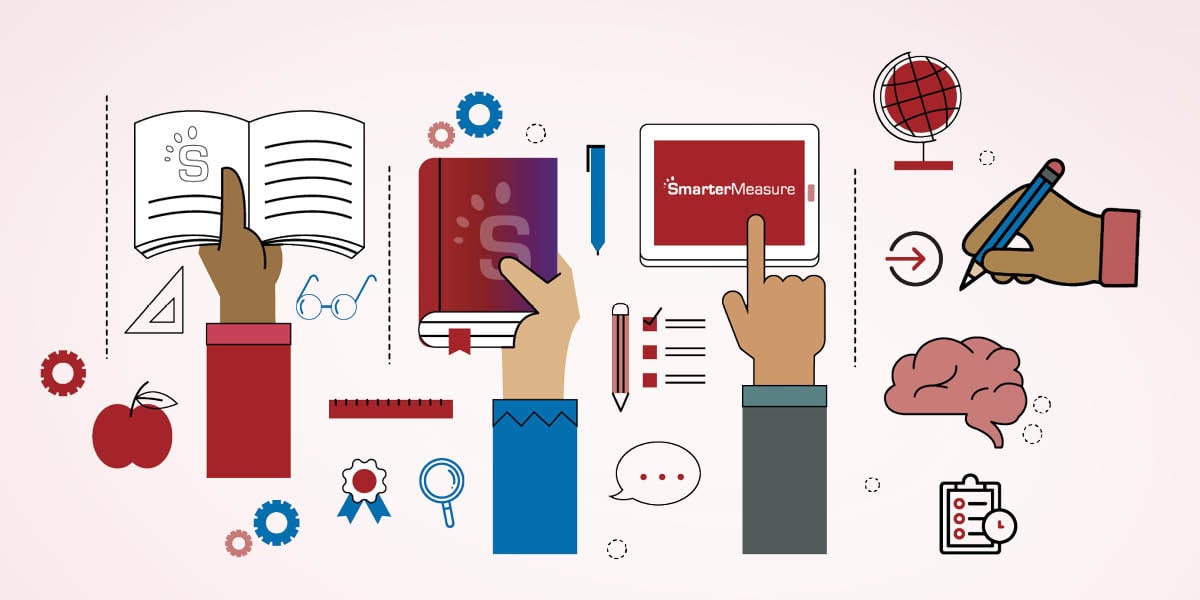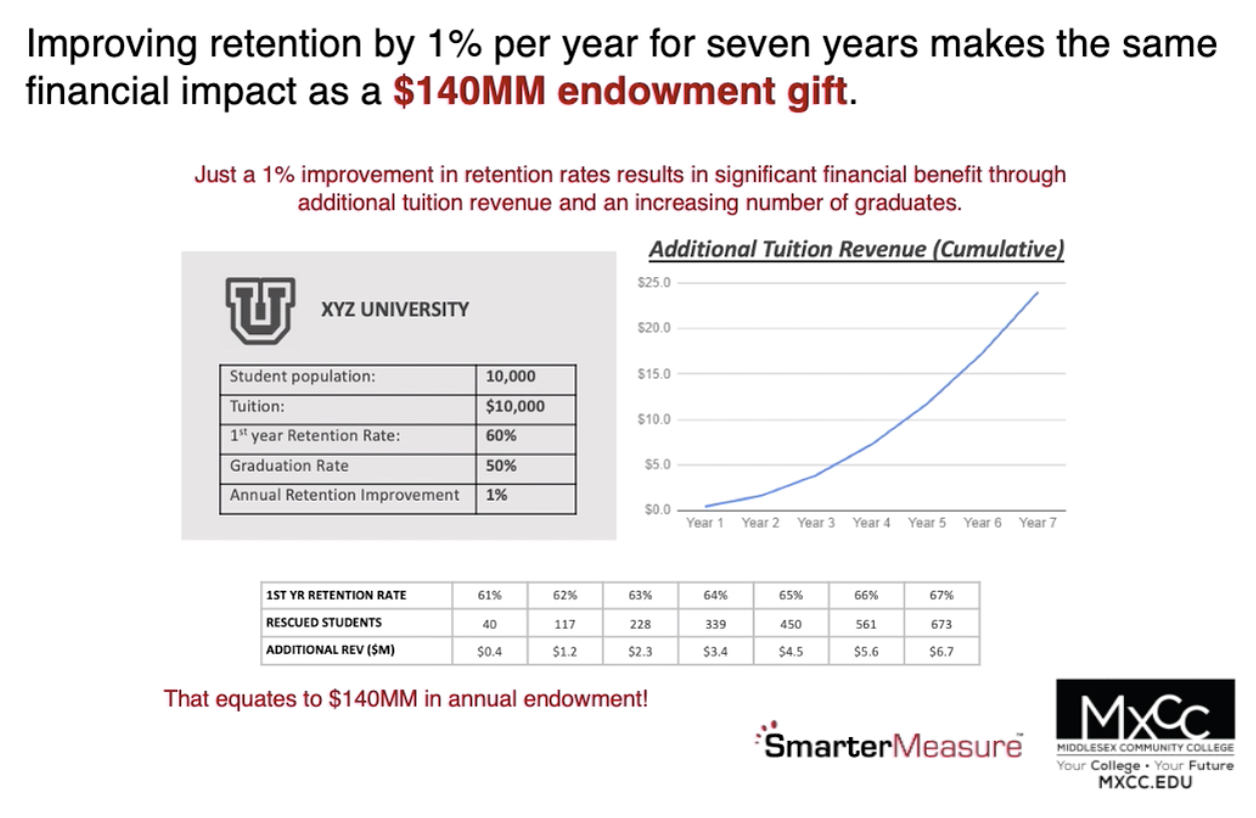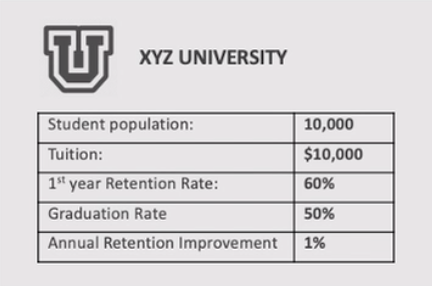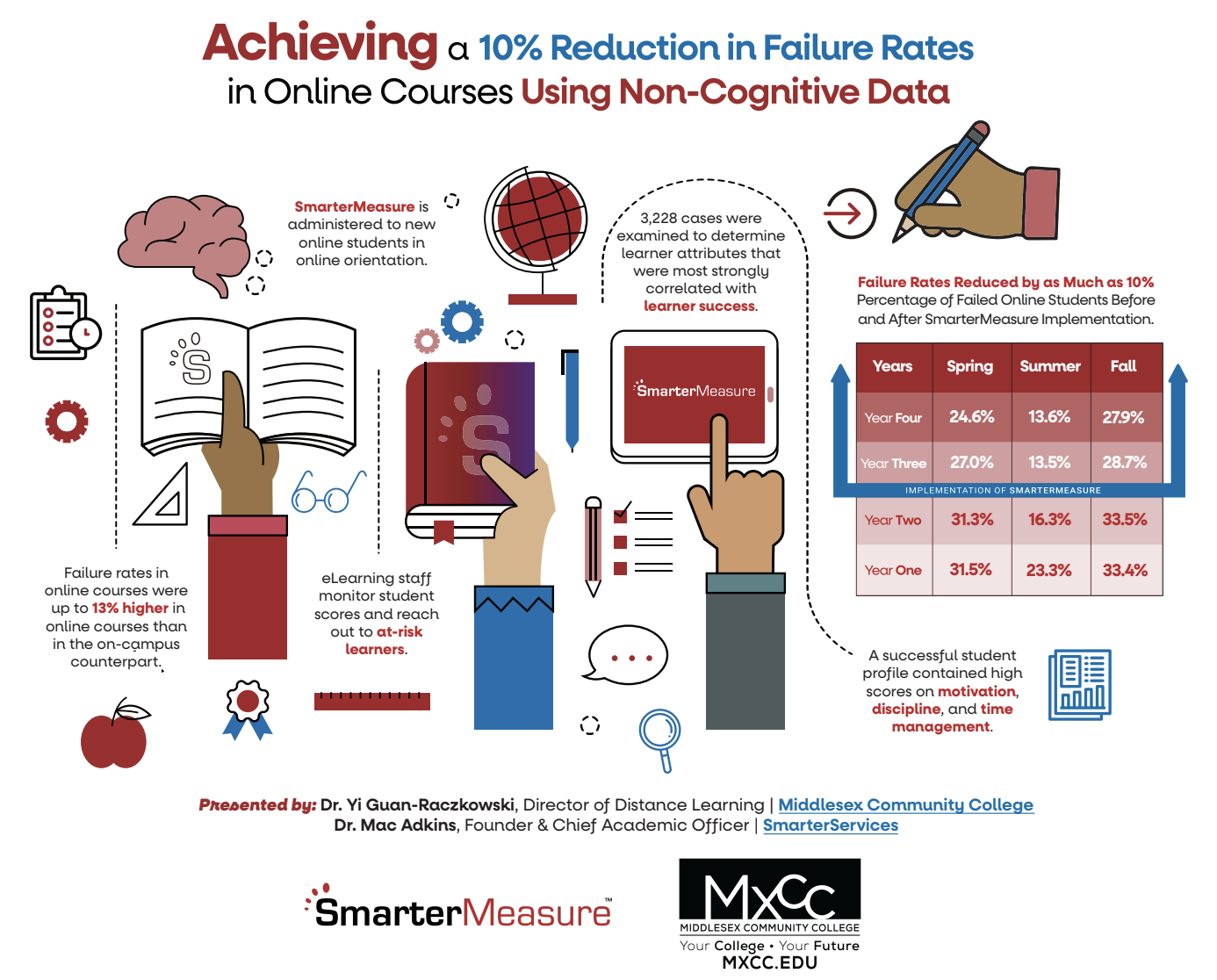
Dr. Yi Guan-Rackowski, Director of Distance Learning at Middlesex Community College and I recently did an online poster presentation during the National Symposium on Student Retention. In this presentation, we discussed how Middlesex Community College was able to achieve a 10% reduction in failure rates in their online courses through using non-cognitive data.
Check out our on-demand presentation video to learn more!
Presentation Recap:
Let me ask you a question. If you donated $140,000,000 to your school, would they name a building after you? Well, they should name a building after Yi because of the work that is being done with retention at Middlesex Community College.
So let me tell you what I mean by that. Consider this. Here is a scenario that I saw presented once.
 When I saw this, I said, "Wow, that is really something to think about!" because if someone donated $140,000,000 to your school, what your school would likely do with that is invest it. Then, each year they would draw off the interest that it made. Essentially, they could draw about 5% interest on that and never have to touch the principle and if they did that, they would get about 6.7 million dollars per year in interest off of that gift.
When I saw this, I said, "Wow, that is really something to think about!" because if someone donated $140,000,000 to your school, what your school would likely do with that is invest it. Then, each year they would draw off the interest that it made. Essentially, they could draw about 5% interest on that and never have to touch the principle and if they did that, they would get about 6.7 million dollars per year in interest off of that gift.
Think about this: If you and your institution improved retention by just 10% per year over a 7 year period, the financial impact that would have on your university is parallel to the financial impact that the large financial donation would make.
Here's the way that works. Take a look at this factious university's stats.

Imagine they have 10,000 students and tuition is about $10,000 a year.
Now look at this chart.

The number of rescued students with just 1% if they started with a base line of 60% retention improves it by 40 students. Over 7 years, that improves to 673 students per year which is the same additional revenue of that 6.7 million dollars talked about earlier.
So, while those of us working in retention may not have buildings named after them, I think you guys deserve it! Because the work that you're doing in retention makes a huge financial impact to our institutions.
But you know what? There's something even more important than the financial impact that it makes to our schools. And that is the life changing impact that it makes to each individual student that we help by our efforts to boost retention.
So, now let's go over the research that Dr. Yi Guan-Rackowski did at Middlesex Community College on how they were able to boost retention and achieve a 10% reduction in failure rates for their online courses.
The poster below outlines what Middlesex Community College has done while using SmarterMeasure and the benefits that our online students have enjoyed. Below, you can read the information on the post explained according to Dr. Yi Guan-Rackowski.

Results and Poster Explanation by Dr. Yi Guan-Rackowski
Middlesex Community College has implemented SmarterMeasure since fall in 2008. Ever since, they have used SmarterMeasure to help their new online students self-evaluate their readiness in learning online. They have an online orientation website that integrates taking the SmarterMeasure Learner Readiness Assessment as the first step of the orientation. Their distance learning staff monitored the test results and sent emails to those students who received questionable results while providing them with necessary training or helpful resources.
In the early adoption stage, they did a comprehensive study on the relationships between SmarterMeasure and the student grades for students taking fully online courses. They analyzed over 3,000 students and conducted a correlation study looking for the correlation between the SmarterMeasure scores and the student's final grades.
The study found that there was a significant correlation between the personal attributes section and the student grades. Subsequently, they integrated research findings into their training and their orientation for online students. They also provided informational training to their potential students who were interested in taking online courses, but still were wondering if they could be successful.
The asked their student to take SmarterMeasure. Then they evaluated their test results. During the training and orientation, they emphasized that the score in their personal attributes, including motivation, self discipline, time management, and personal factors play a big role in their learning success.
They told their students that they could help them with technology and tutoring services for reading and comprehension, but that it was crucial for them to know that they themselves are the driver of their learning success.
By going over this in the orientation and training, Middlesex Community College was able view the failure rates in online students vs. in-person students and looked at the percentage of failed students 2 years before implementing SmarterMeasure and 2 years after.
The results showed that after they had implemented SmarterMeasure, the percentage of failed students in an online class was reduced up to 10%. Overall, this has been great news of them as they continue to use SmarterMeasure to help their online students pin-point their weak areas.
Start measuring your students today!
To learn more about SmarterMeasure or how it can help you reduce failure rates in your online courses, reach out to us. We'd be happy to provide you with more information.
For more great educational blogs like this one, click here to subscribe to our blog.



.jpg)


